Italy is home to some of the world’s most hauntingly beautiful castles and grand palaces. From Castel Sant’Angelo in the center of Rome to fortresses carved into the hills of the Cinque Terre, castles in Italy offer fascinating backstories and beautiful architecture in fairytale settings.
From military strongholds and decadent palaces to citadels once home to small villages, discover the 13 most spectacular castles in Italy on your next European vacation.
Castel Sant’Angelo, Rome
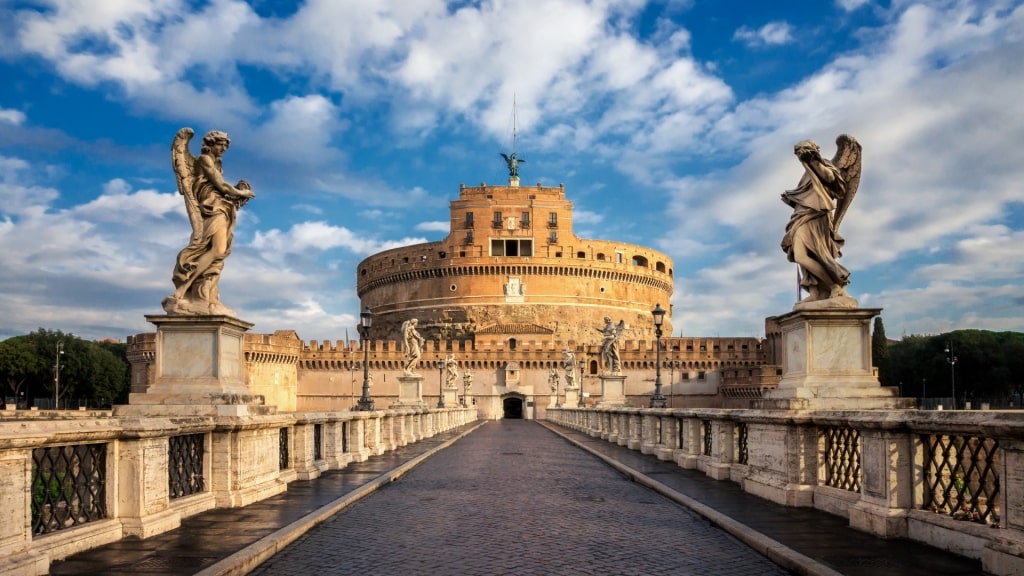
Castel Sant’Angelo, Rome
Don’t overlook a visit to Castel Sant’Angelo on the right bank of the River Tiber, especially if you have at least three days in Rome. Located east of the Vatican City in the center of Rome, Castel Sant’Angelo revels in an extraordinary history.
Built between 135 and 139 AD, Castel Sant’Angelo was originally the mausoleum of the emperor Hadrian. Castel Sant’Angelo was turned into a castle in the fifth century, though centuries later, it would serve as a refuge for popes, a military barracks, and a prison.
Characterized by a circular fort, this European castle features chapels, halls, apartments, a courtyard, and cells, surrounded by square-shaped grounds with an outer defense at each corner.
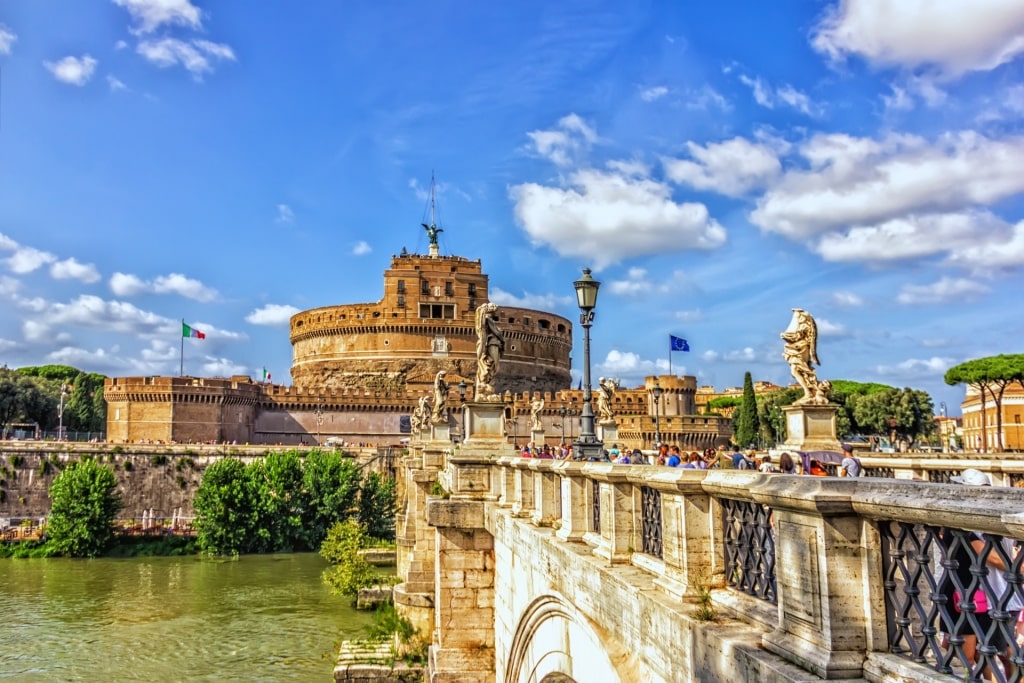
St. Angelo Bridge, Rome
Cross the five-arched St. Angelo Bridge, built in 134 AD, for the best views of Castel Sant’Angelo. Inside, view magnificent Renaissance artworks that Italy is known for, including a piece by Raphael. There’s also a military museum, exhibitions, libraries, theaters, and a café.
Read: Visiting Italy With Teens
Castello Normanno, Aci Castello, Sicily
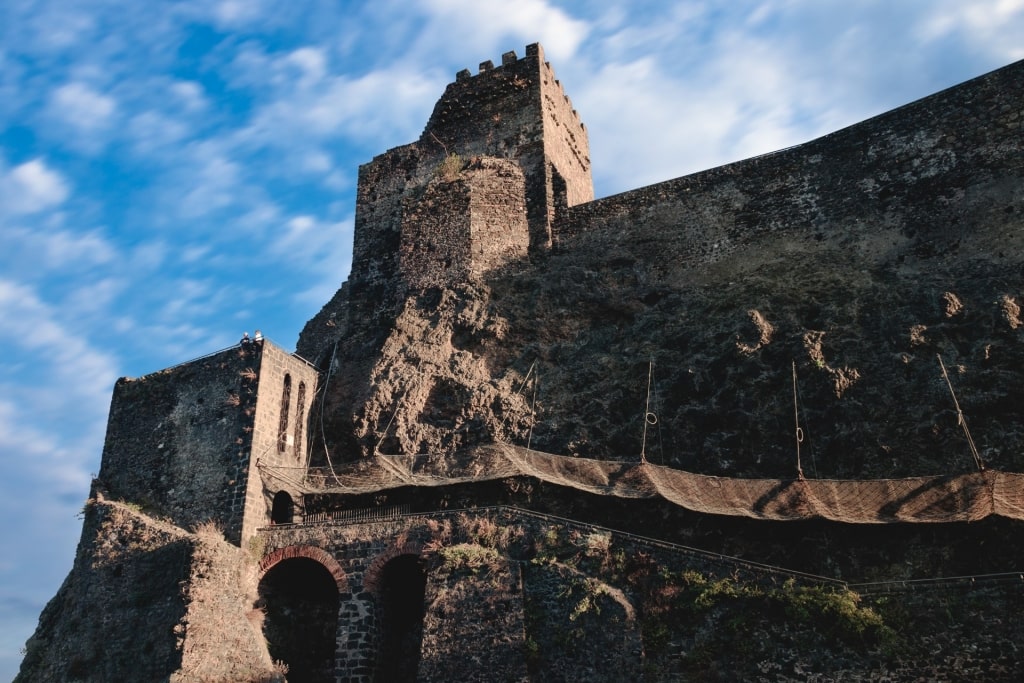
Castello Normanno in Aci Castello, Sicily
Italy’s medieval castles don’t get more dramatic than Sicily’s Castello Normanno in the village of Aci Castello, near Catania.
The basalt rock upon which the 11th-century castle is built is the result of a volcanic eruption in the sea over half a million years ago. The castle was built in 1076, its charcoal-colored walls made from black lava stones. This east coast stronghold also features glorious turrets and a protective crenelated facade.
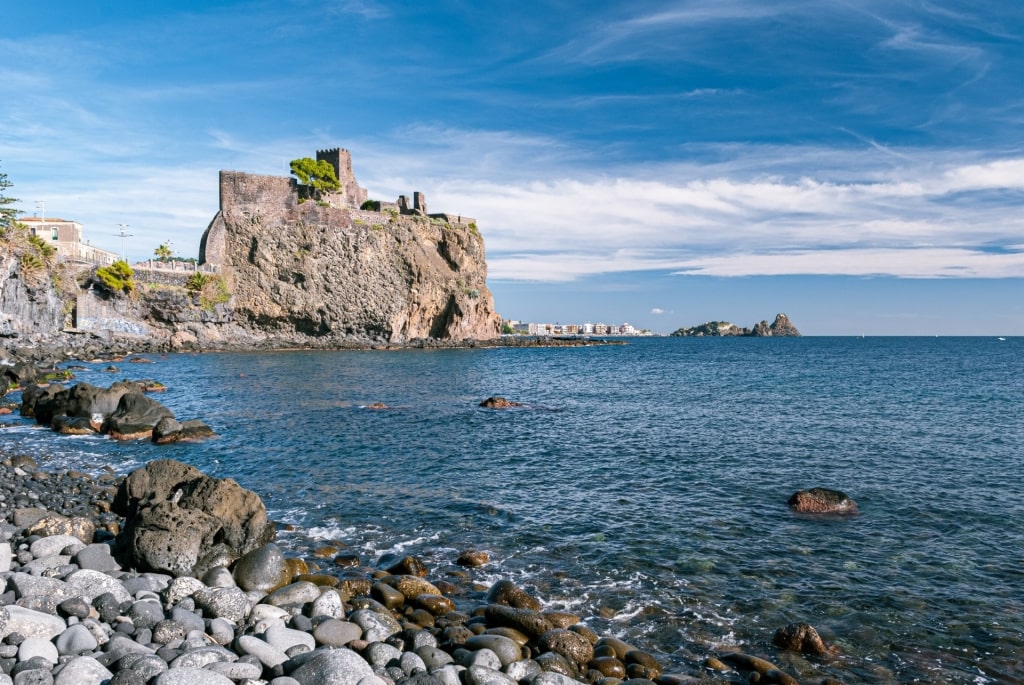
Castello Normanno in Aci Castello, Sicily
Visitors can access Castello Normanno from the west side via a stone bridge in place of the original timber drawbridge.
The structure is now a museum, and you can wander the many rooms to explore the archaeological exhibition, with pieces dating from the prehistoric age and a section dedicated to mineralogy.
Monterosso Castle, Cinque Terre
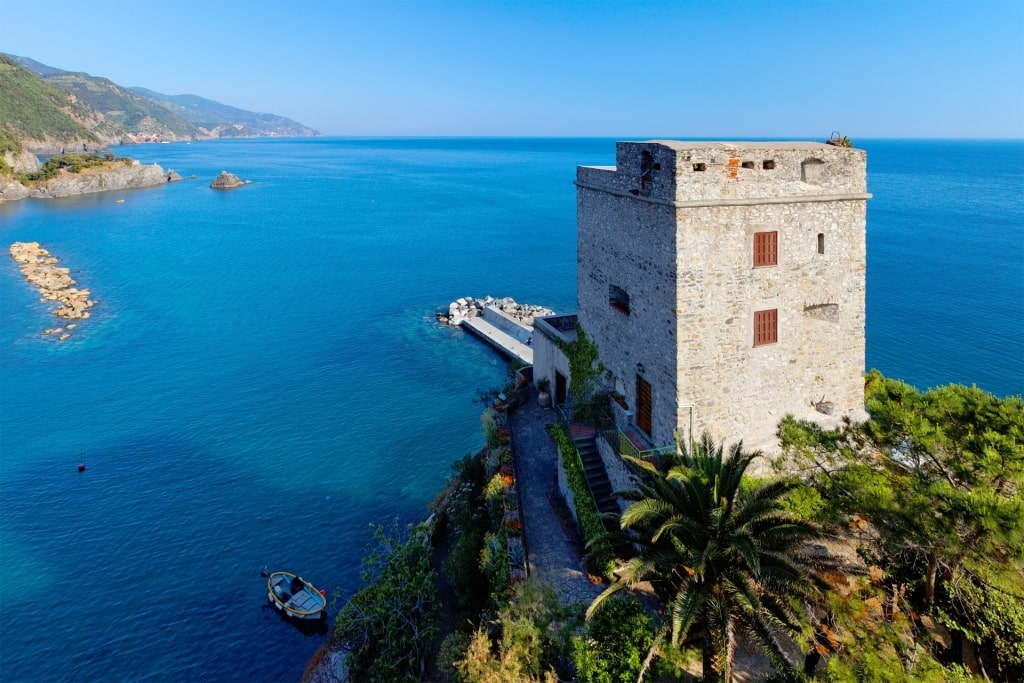
Monterosso Castle, Cinque Terre
Above the sparkling blue of the Mediterranean Sea, Castle Monterosso sits on top of a rocky spur in the rugged seaside village of the same name, the largest of the Cinque Terre.
Orbetenghi Monterosso is one of the best medieval castles in Italy for its position on this gorgeous UNESCO-protected stretch, known for its colorful old buildings that cling to the steep cliffs.
The original citadel and its grounds included 13 towers, a defensive wall, the bell tower of the church of San Giovanni Battista, and the Aurora watchtower at the foot of the San Cristoforo hill.
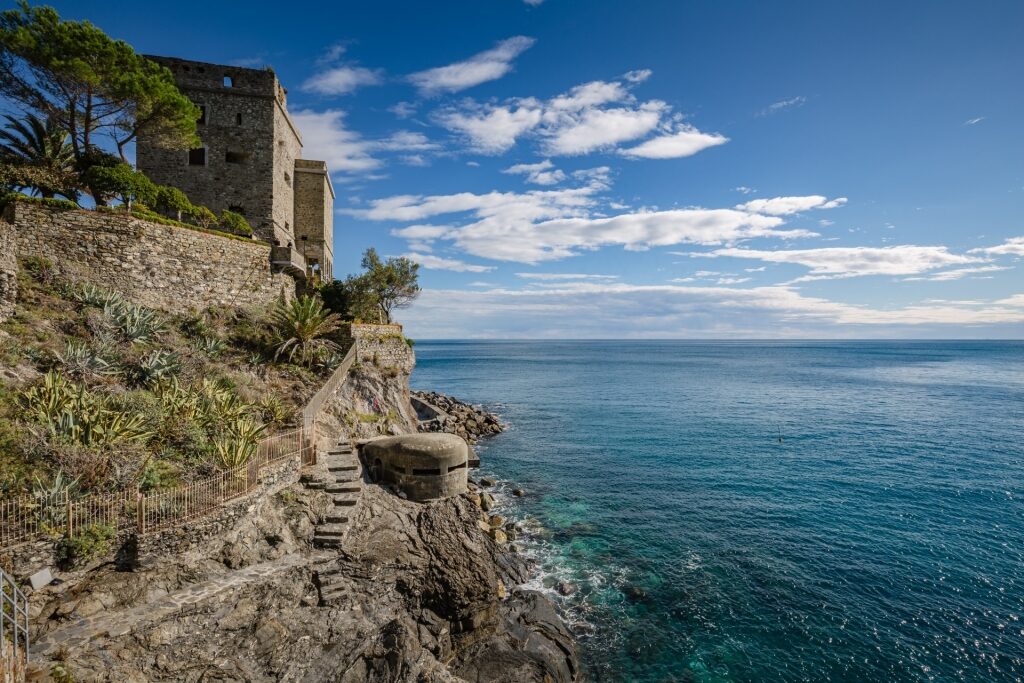
Monterosso Castle, Cinque Terre
During a trip to the majestic Cinque Terre—which also includes the towns of Vernazza, Corniglia, Manarola, and Riomaggiore—stop by the remains of Castle Orbetenghi Monterosso, which include three remaining towers and sections of the old walls.
Read: Best Things to Do in Cinque Terre
Castel dell’Ovo, Naples
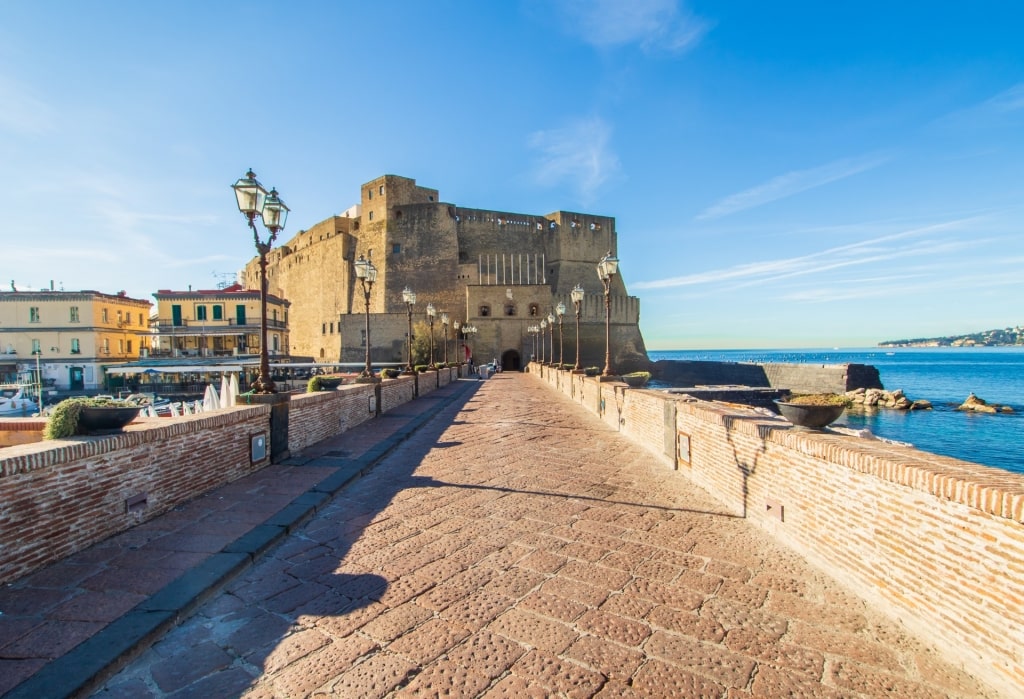
Castel dell’Ovo, Naples
A former defensive fortress, prison, and royal residence, the striking Castel dell’Ovo is located on the islet of Megaride, next to Naples’ bustling harbor on the west coast of Italy.
Built in the 12th century, Castel dell’Ovo is the oldest fort in Naples.
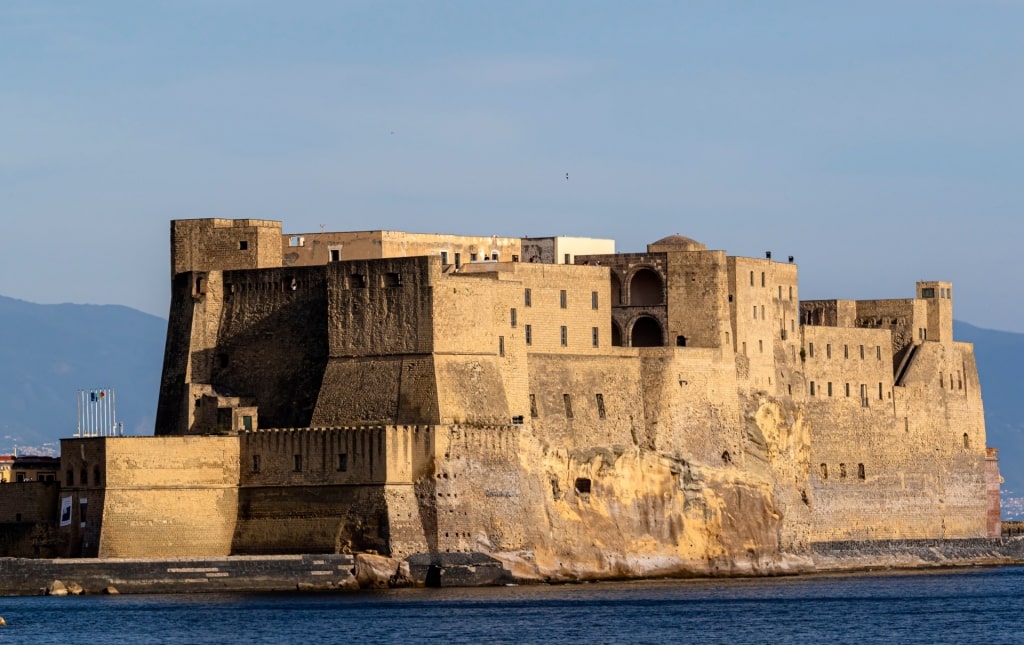
Castel dell’Ovo, Naples
Legend has it that the castle acquired its name (Castel dell’ Ovo, or Ovo Castle, translates as Egg Castle) from the Roman poet Virgil who supposedly concealed a magical egg in the foundations below the castle.
Should the egg break, Naples would experience great disasters. Regardless of whether or not the tale is true, the name stuck.
Discover Castel dell’Ovo’s ancient stone walls as you stroll around the grounds and marvel at the views of the towering Mount Vesuvius, one of two active volcanoes on mainland Europe, in the background.
Castello Brown, Portofino
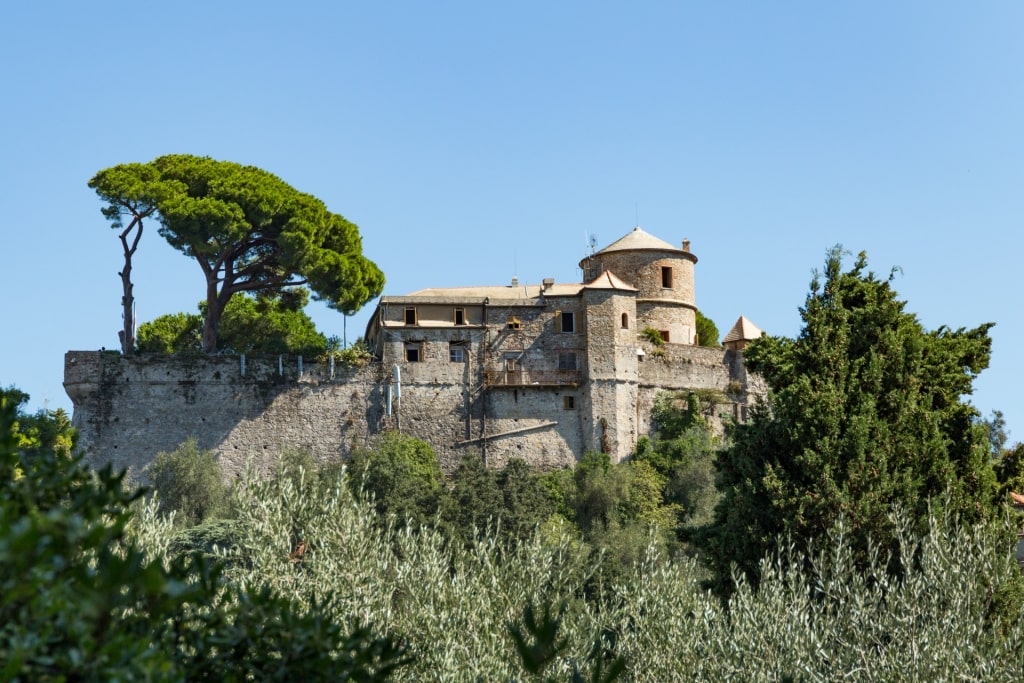
Castello Brown, Portofino
The 16th-century Castello Bown is a breathtaking fortress set amid a green pine forest, high above the glitzy Italian Riviera town of Portofino in northwest Italy.
Castello Brown takes its name from its late owner, the British diplomat Montague Yeats Brown who extended and renovated the castle during the late 19th century.
Castello Brown is riddled with history dating much earlier than Brown’s ownership. In the early 1800s, Napoleone Bonaparte is known to have strengthened the castle’s defense system.
The castle grounds offer the perfect opportunity to gaze down at Portofino and the bay’s rows of pristine mega-yachts.
Castello Aragonese, Taranto
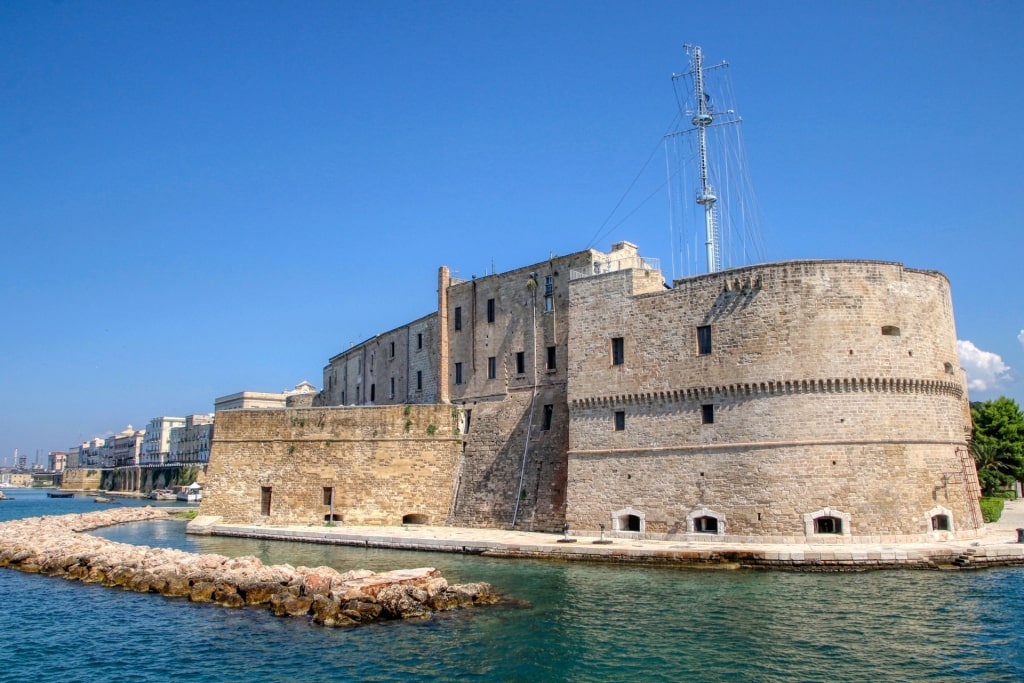
Castello Aragonese, Taranto
This attractive cream-colored castle in Taranto is a brilliant example of one of the best medieval castles in Italy. Erected on the site of older fortifications, the existing castle was rebuilt on the orders of the King of Naples, Ferdinand of Aragon, in 1492.
Siena architect Francesco di Giorgio Martini was responsible for the castle’s 15th-century redesign, including seven towers. Castello Aragonese was later used as a prison before returning to use as a military fortress during the Napoleonic period.
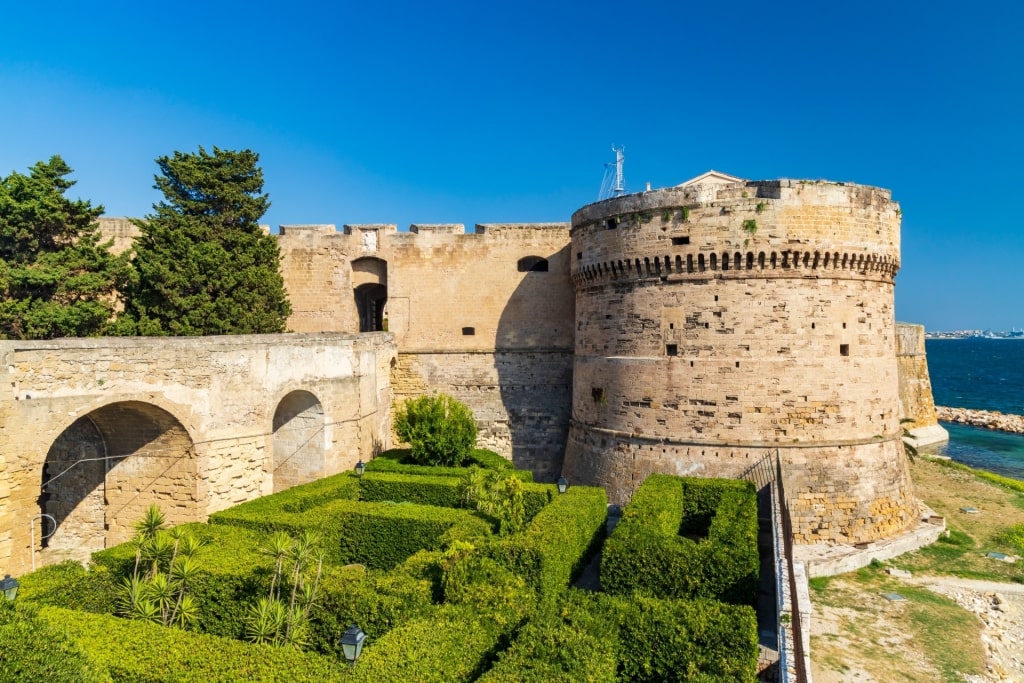
Castello Aragonese, Taranto
The Italian Navy currently occupies the castle, offering year-round guided tours of the grounds. Guided tours trace the archeological history of Castello Aragonese through to its Byzantine-era roots.
Odescalchi Castle, Bracciano, near Rome
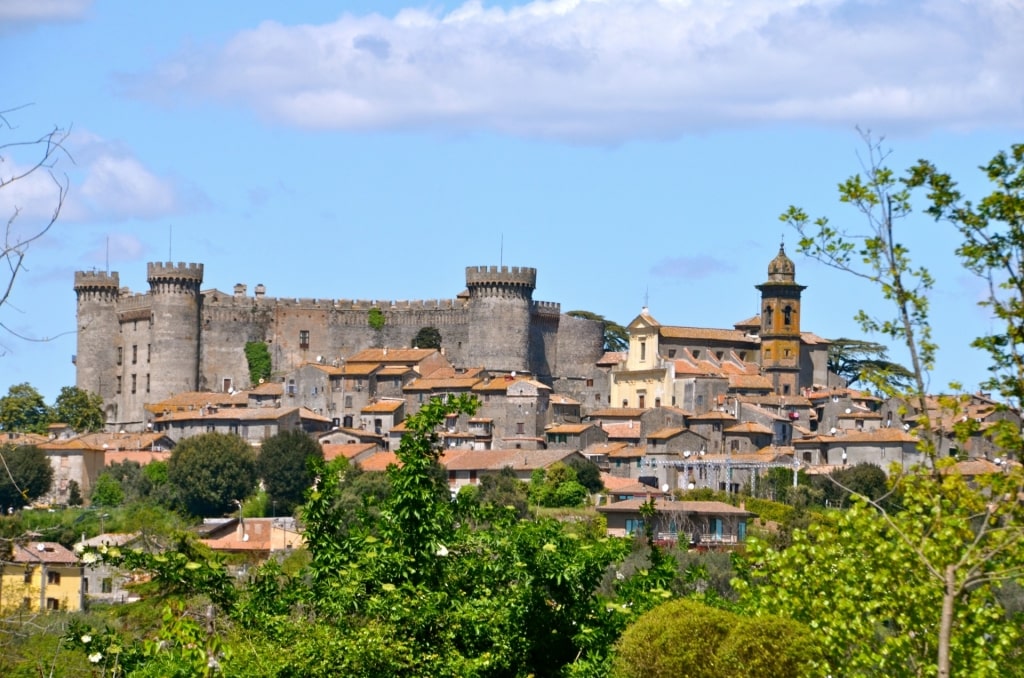
Odescalchi Castle in Bracciano, near Rome
The remarkable Odescalchi Castle in Bracciano was built in the 15th century close to the banks of the town’s sublime lake. Considered one of the most outstanding castles in Italy, Odescalchi is a Renaissance masterpiece, just a 50-minute drive northwest of Rome.
It’s easy to see why Lazio’s most influential families once fought over ownership of Odescalchi, so much so that in 1497, Pope Alexander VI Borgia confiscated the castle to end the bickering.
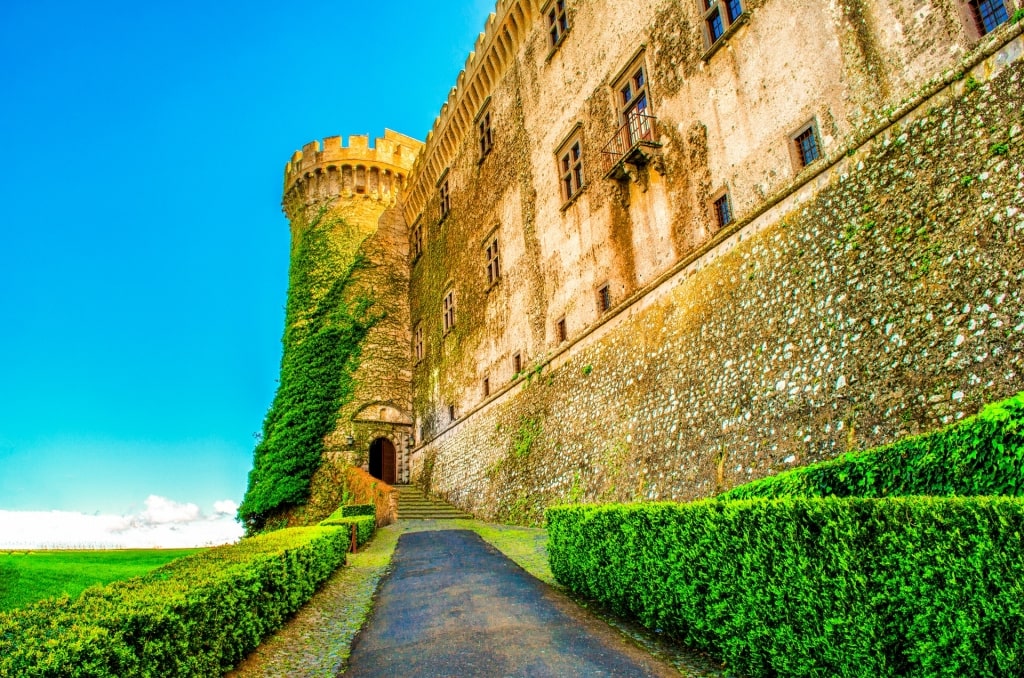
Odescalchi Castle in Bracciano, near Rome
There are over 20 lavishly-appointed rooms and jaw-dropping courtyards of Odescalchi Castle for visitors to discover.
Muse over the busts of the Twelve Caesars, the Gothic Hall, the Science Hall, and the old kitchens. Marvel at Early Renaissance paintings,15th- and 16th-century furnishings, and extensive weapons collection at the art gallery.
Spend time wandering the leafy external spaces, including the Court of Honour, known for its grand arches, the ramparts, and gardens overlooking the lake.
Castel Nuovo, Naples
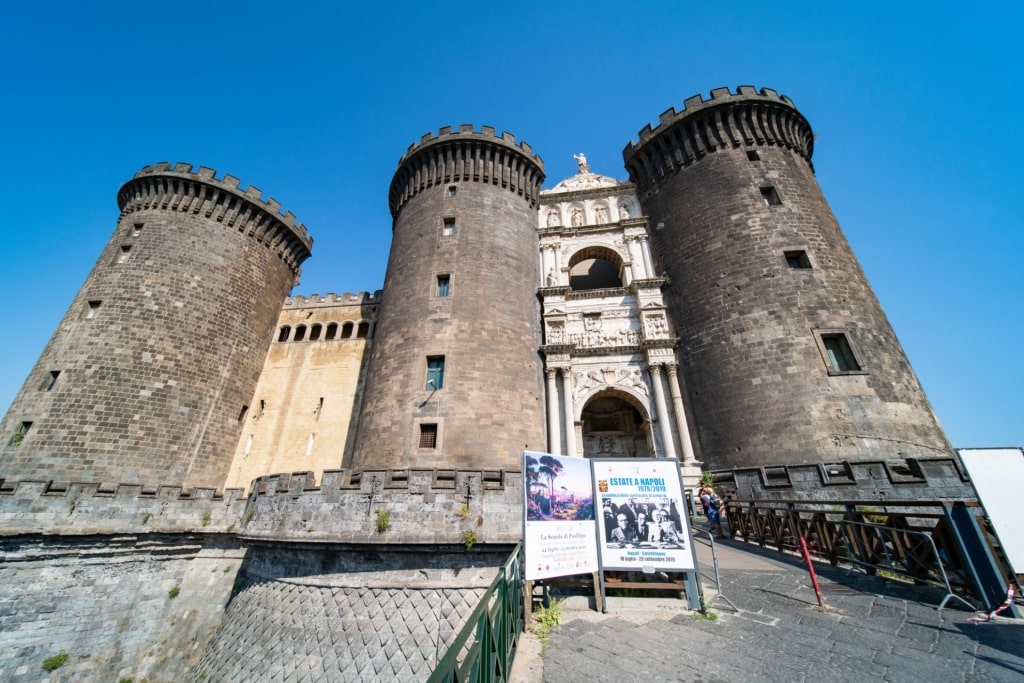
Castel Nuovo, Naples
Castel Nuovo, also known as Maschio Angioino, lies right in the middle of Naples, close to the waterfront on Piazza Municipio. It’s one of the most beautiful medieval castles in Europe.
Set apart from Naples’ two older castles, dell’Ovo and Capuano, Castel Nuovo features imposing royal architecture.
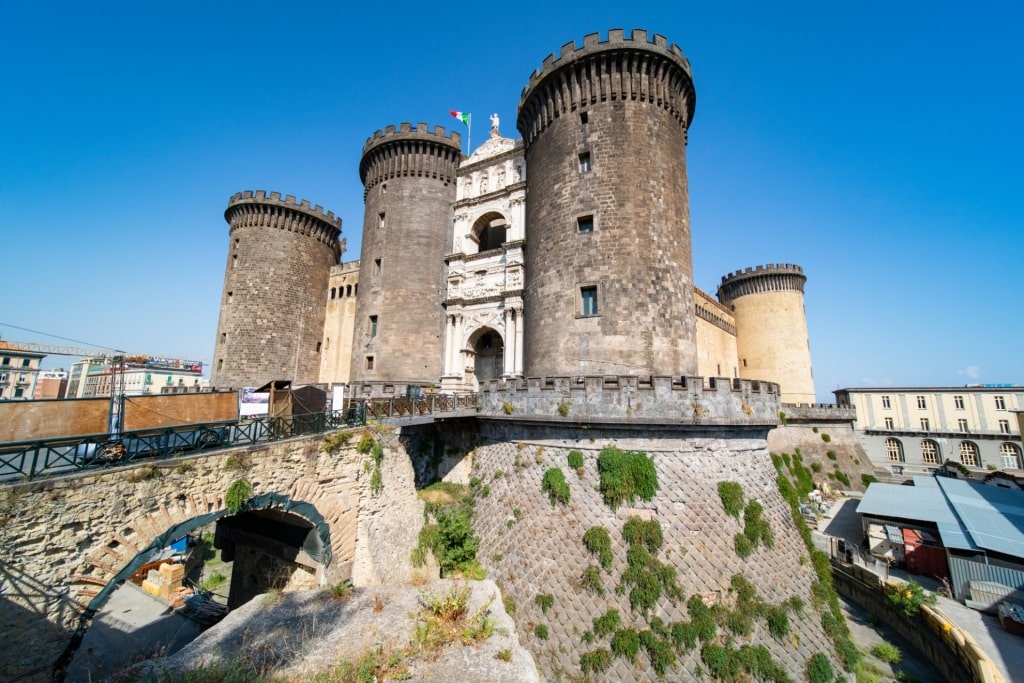
Castel Nuovo, Naples
Built in the 13th century, Castel Nuovo has been adapted over the centuries to suit the needs of its royal residents, including kings of Naples, Aragon, and Spain, up until the early 19th century. The fortress walls were also strengthened to support times of war in the region.
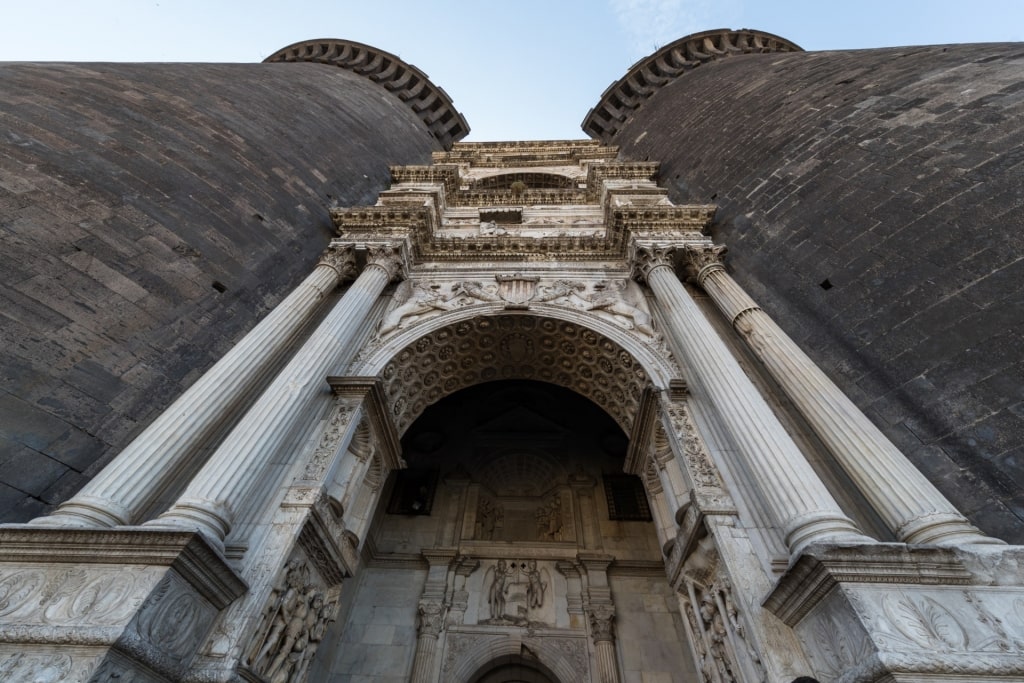
Castel Nuovo, Naples
One of the most spectacular features of the castle is the triumphal arch, added in 1470 between two eye-catching towers.
Follow in the footsteps of famed Italian painter and architect Giotto, who visited the castle during its early years. Take in the Armoury Hall, the Palatine Chapel, the two levels of the southern courtyard, and Charles V Hall.
Castello del Catajo, Padua, near Ravenna
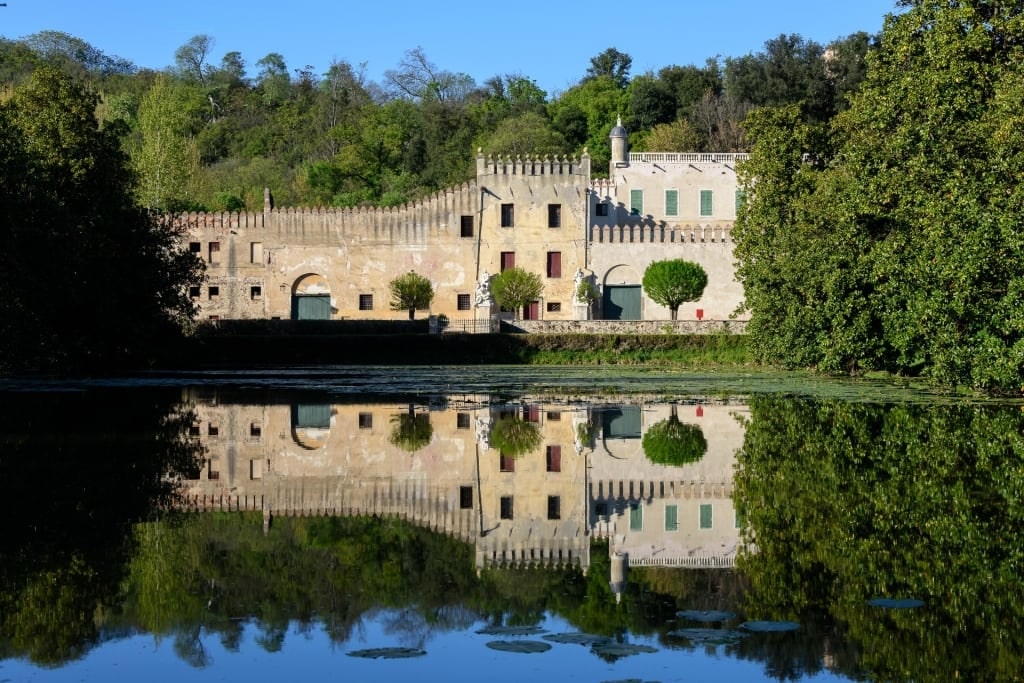
Castello del Catajo in Padua, near Ravenna
Catajo is a jewel of a castle nestled on the edge of the Euganean Hills in Veneto, the northeasternmost province of Italy. The castle is easily reached in under an hour from Venice or two hours from Ravenna.
The enchanting Castello del Catajo has a fascinating history, built in 1570 by its then-owner Pio Enea I degli Obizzi, with the assistance of architect Andrea Da Valle. Giovanni Battista Zelotti, a disciple of Paolo Veronese, was hired to create the vivid interior frescos.
Castello del Catajo has been added to over the centuries—including by Pio Enea II, who added a theater with 16 stages to host plays.
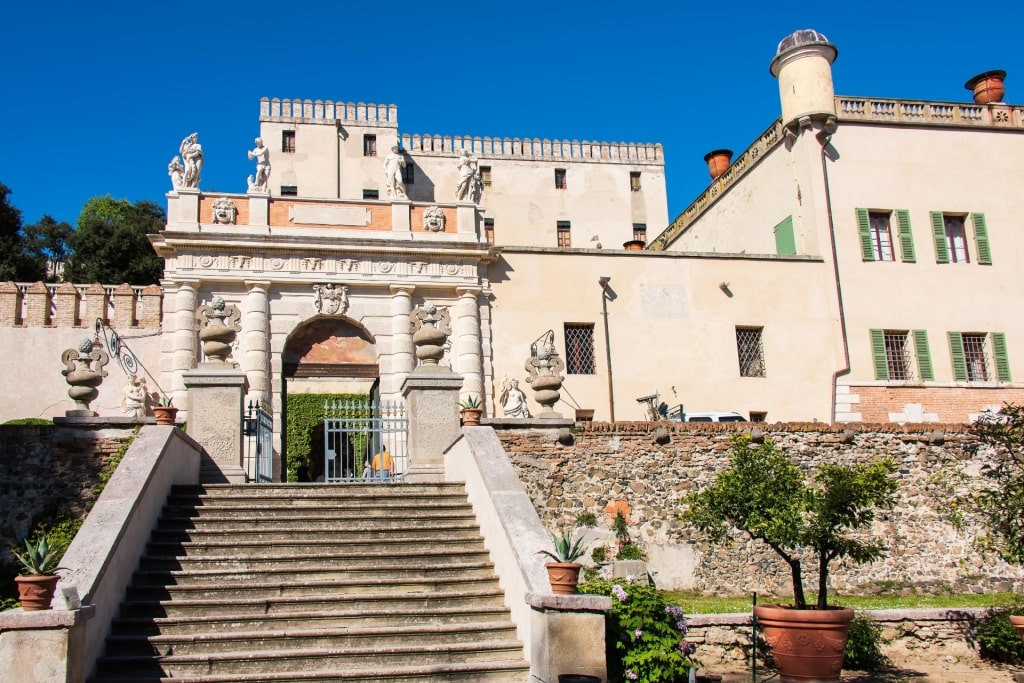
Castello del Catajo in Padua, near Ravenna
During the 19th century, the castle was adapted further by its then owners to become one of the grand palaces of Europe, hosting dukes, emperors, and prominent families from across the continent.
In 1875, Catajo was bestowed upon Archduke Franz Ferdinand. The Archduke was staying at Catajo on a deer-hunting trip immediately before leaving for Vienna and then on to Sarajevo, where he was assassinated in June 1914, resulting in the outbreak of World War I.
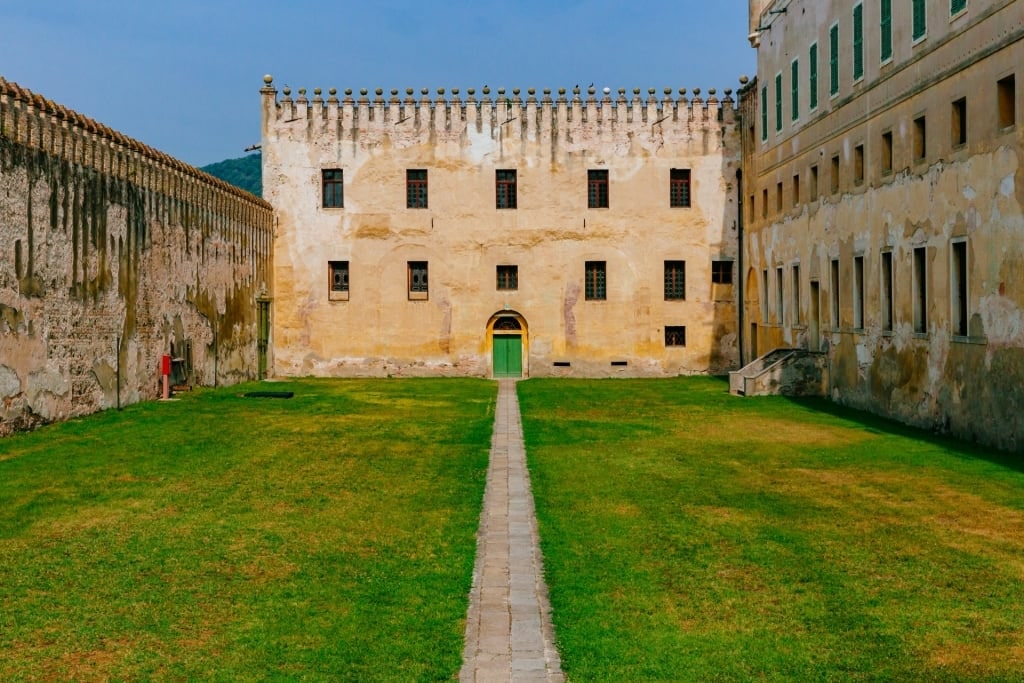
Castello del Catajo’s Garden of Delights in Padua, near Ravenna
Witness the evocative frescoes inside the castle’s Noble Floor, including a family tree of the Obizzi family. You could then explore the castle’s extensive grounds, including the tranquil Garden of Delights, home to two towering 18th-century magnolias and an arresting sequoia tree that was one of the first examples of its kind imported from North America.
Read: Exquisite Gardens in Italy to Explore
Castle of San Michele, Cagliari
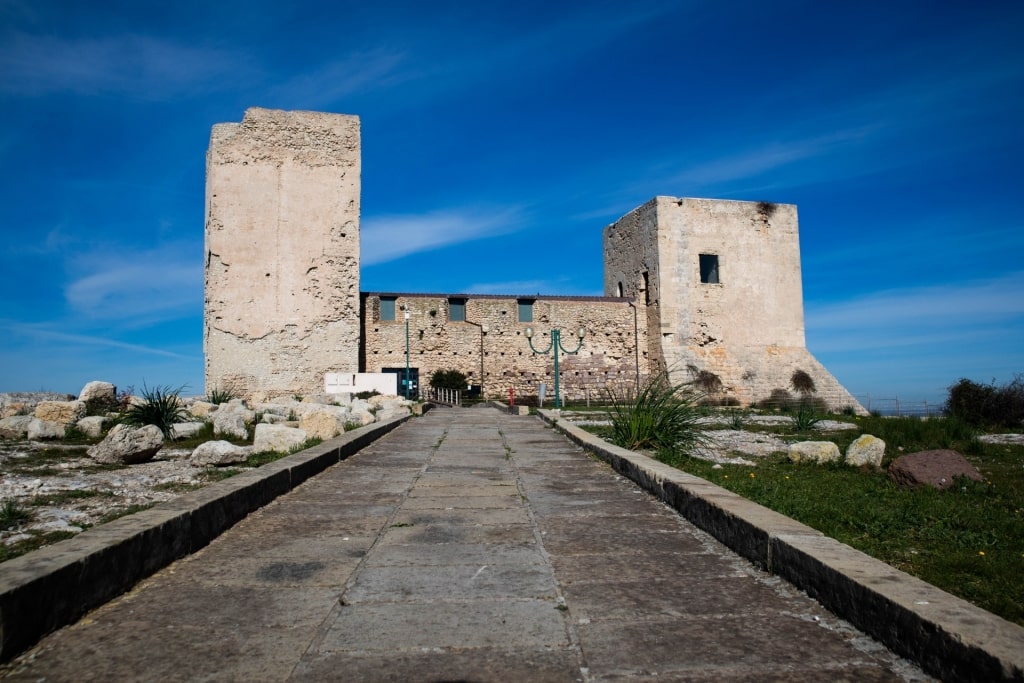
Castle of San Michele, Cagliari
San Michele is a medieval castle perched on one of the seven hills of Cagliari in a park shaded by pine trees, overlooking Sardinia’s capital.
Built in the 12th century, an era known as the Giudicato period in Sardinia, the limestone Castle of San Michele features three towers connected by a curtain wall and surrounded by a moat.
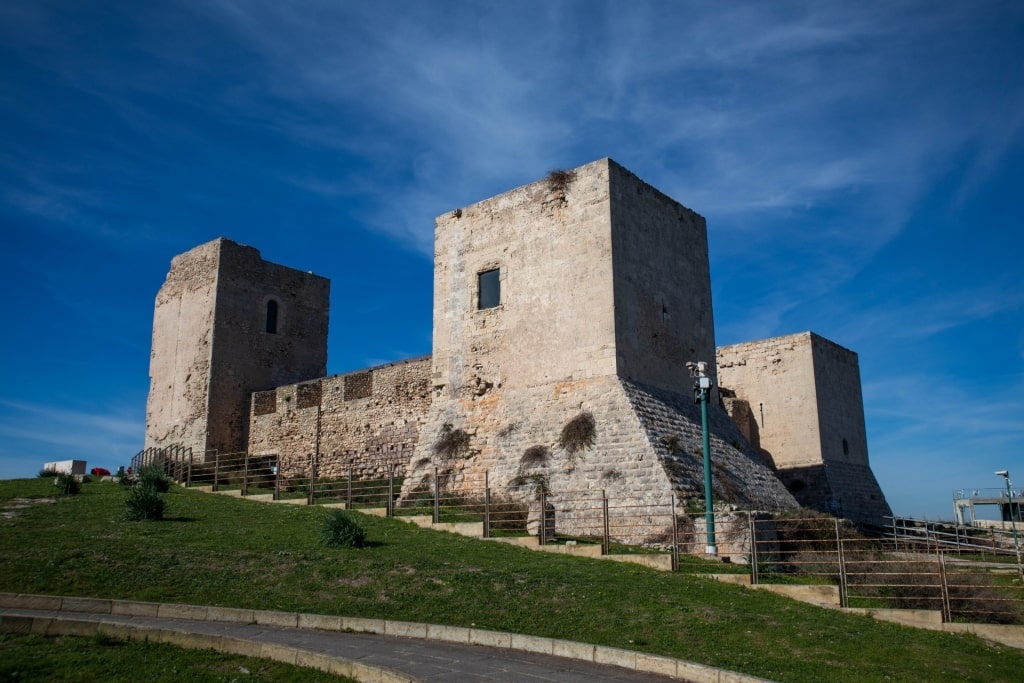
Castle of San Michele, Cagliari
Once used as a military fortification and a hospital, the stately castle is open to visitors today. It’s now home to Sardinia’s Center for Art and Culture. Several guided and self-guided tours are offered for visitors to experience the castle, grounds, and art museum.
Castello di San Giorgio, La Spezia
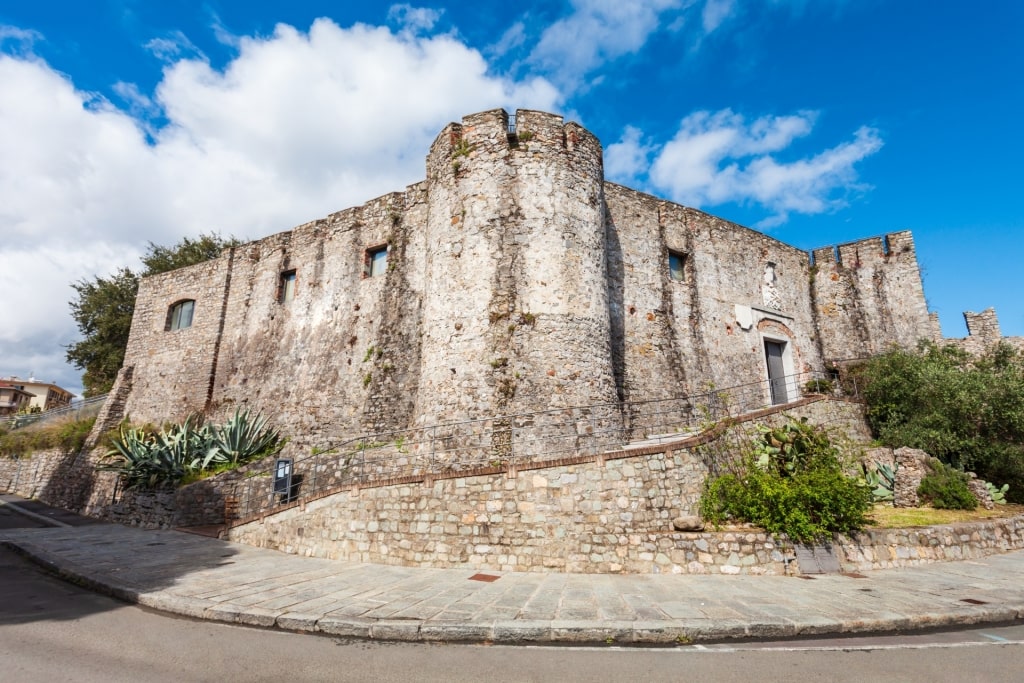
Castello di San Giorgio, La Spezia
Castello di San Giorgio is a fortress in the buzzy Italian naval port of La Spezia, on the Liguria and Tuscany border of northwest Italy.
Dating from the late 14th century, Castello di San Giorgio overlooks the city’s pretty pastel-colored buildings and terracotta rooftops, with views stretching out to the Ligurian Sea.
Split your time in La Spezia between wandering pockets of the historic center and visiting the castle to explore the artifacts on display at the Archeology Museum. A 140-year stalwart of La Spezia, the museum is dedicated to Ubaldo Formentini, director of La Spezia’s Library and Civic Museum, between 1923 and 1958.
Castello Estense, Ferrara, near Ravenna
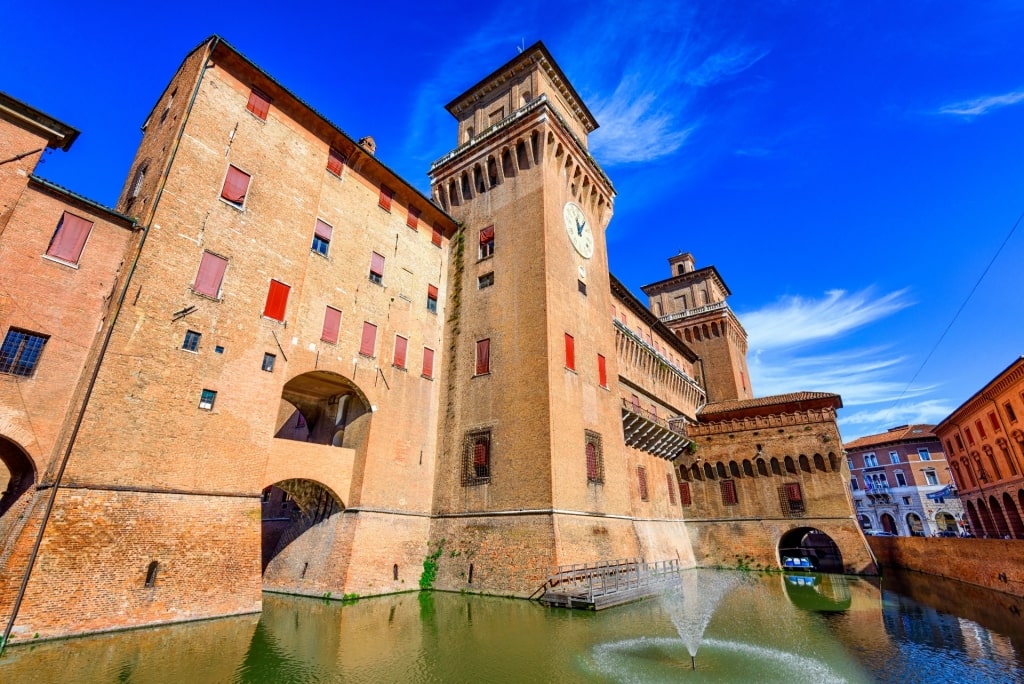
Castello Estense in Ferrara, near Ravenna
The 14th-century Castello Estense is a spellbinding ancient sprawl that lies around 50 miles northwest of Ravenna in Ferrara, in the Emilia-Romagna region of Italy.
The two-story castle is surrounded by a glistening emerald-green moat with four towers linked by a central block.
Damaged during World War II and again during earthquakes that struck northern Italy in 2012, recent decades have seen a series of renovation works undertaken to restore the castle.
Highlights of a visit to Castello Estense include the lavish private chambers, the four Gothic Rooms with their cross-vaulted ceilings and rich decor, and the Ducal Chapel with its extravagant frescoes of the Four Evangelists.
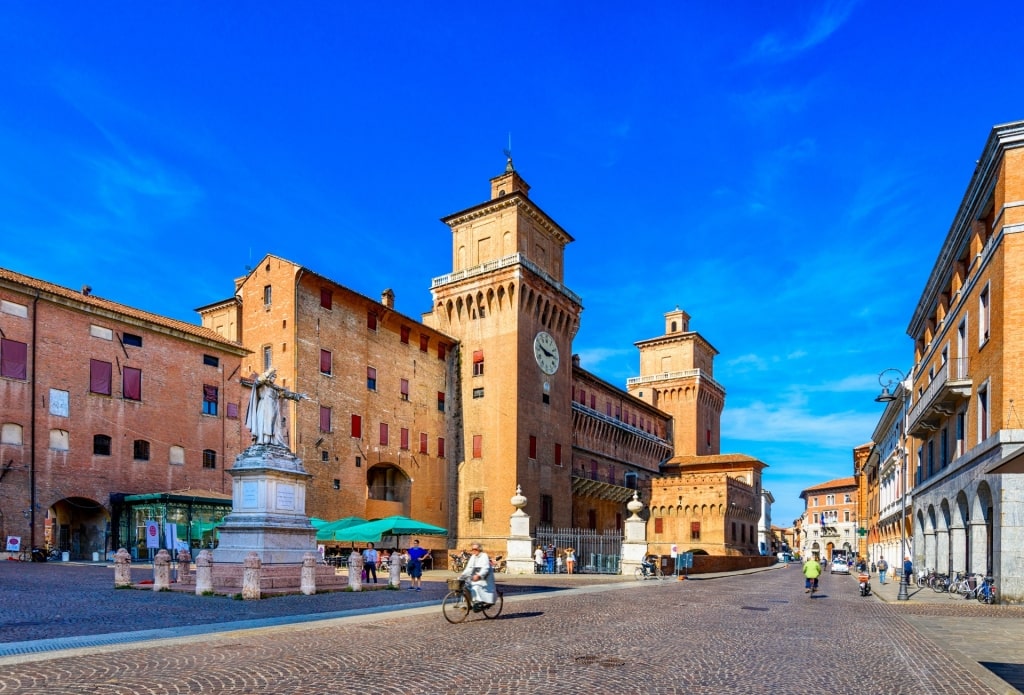
Ferrara
Ferrara is a charming city to explore if you have time to spare, with an ornate Romanesque cathedral, Renaissance buildings, and quaint cobblestone streets filled with cafés, galleries, and restaurants.
Aragonese Castle, Naples
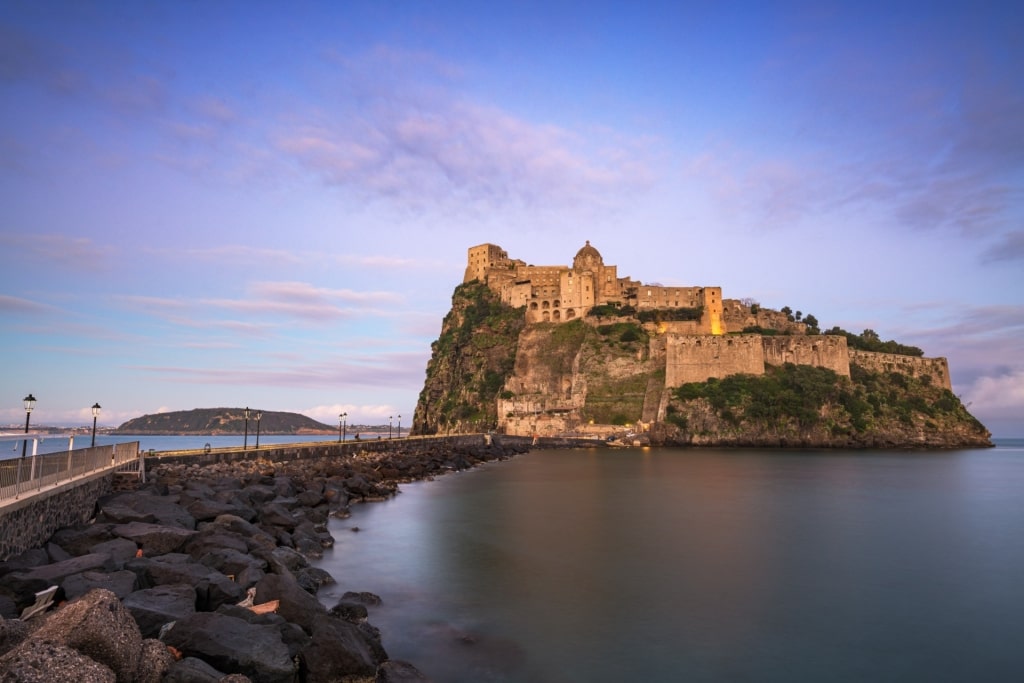
Aragonese Castle, Naples
One of the most scenic medieval castles in Italy, Aragonese lies on a rocky islet, connected to the island of Ischia by a causeway and 50 minutes by ferry from Naples.
Aragonese Castle’s existing footprint, including its defensive walls, was built in the 15th century by Alfonso I of Aragon. However, the earliest settlements on the islet can be traced back to 474 BCE.
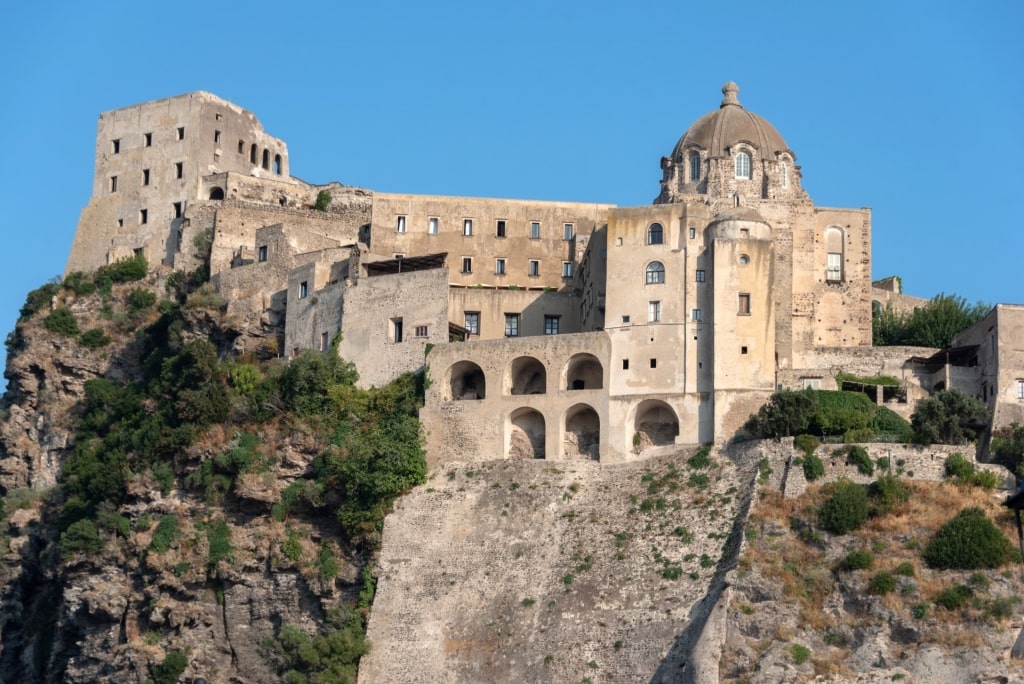
Aragonese Castle, Naples
More recent history saw the castle, including its watchtower and defense tower, restored by the Mattera family, who have owned the building for most of the 20th century.
Spend time wandering among the convents, the former jail known as the Bourbon Prison, luscious terraces of olive, pine, and palm trees, and the Cemetery of the Nuns.
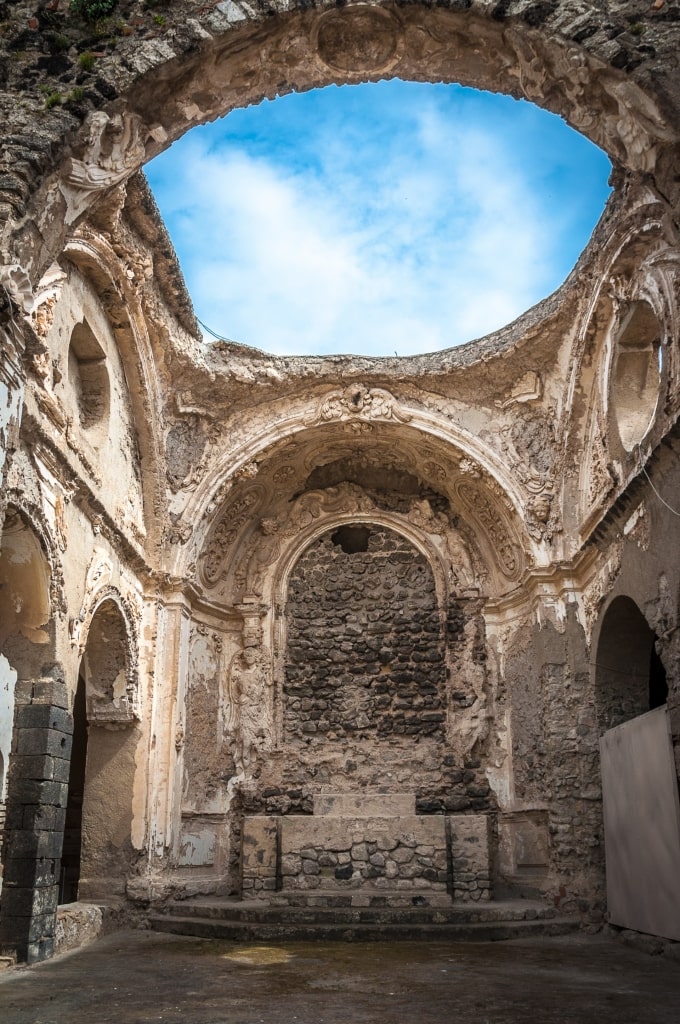
Ruins of Cattedrale dell’Assunta, Naples
Explore the remains of the Cattedrale dell’Assunta and the cluster of churches, including Chiesa della Madonna della Libera, Chiesa dell’Immacolata, and Chiesa di S. Maria alle Grazie.
After, take a seat on the sun-dappled veranda of Il Terrazzo, a serene bar located at the highest point of the island. Gaze at the sparkling azure sea and bustling city of Naples in the distance as you enjoy a well-earned afternoon aperitivo.
Read: Best Italian Honeymoon Destinations
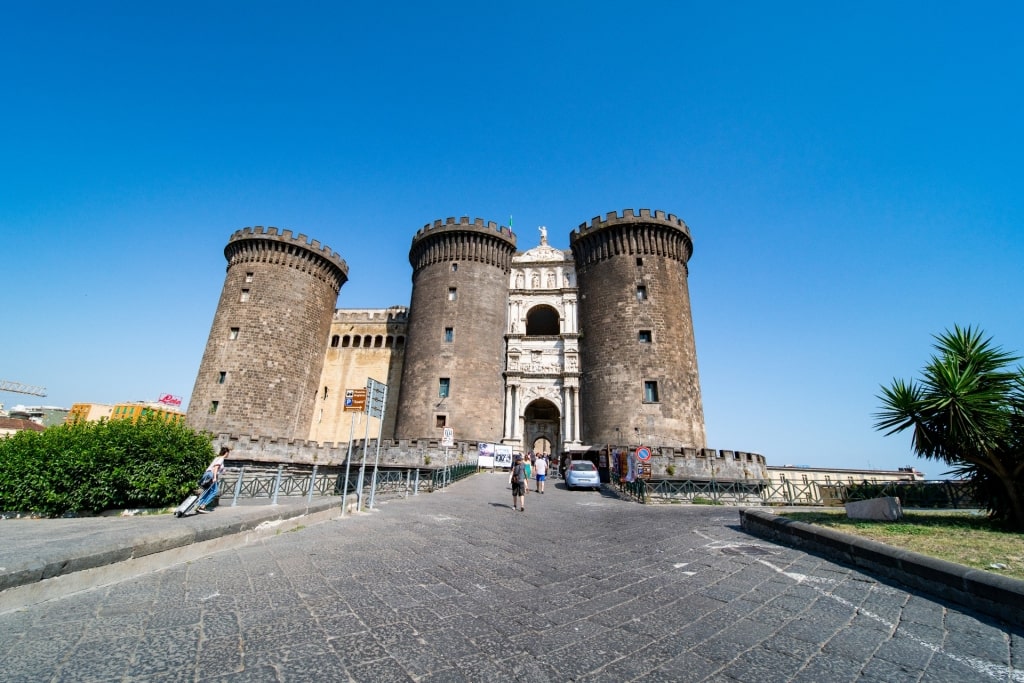
Castel Nuovo, Naples
Castles in Italy, whether from medieval times or more recently constructed, are dazzling, must-visit landmarks sure to feed your thirst for culture, art, and architecture. Discover our cruises to Italy to book your next unforgettable vacation.



